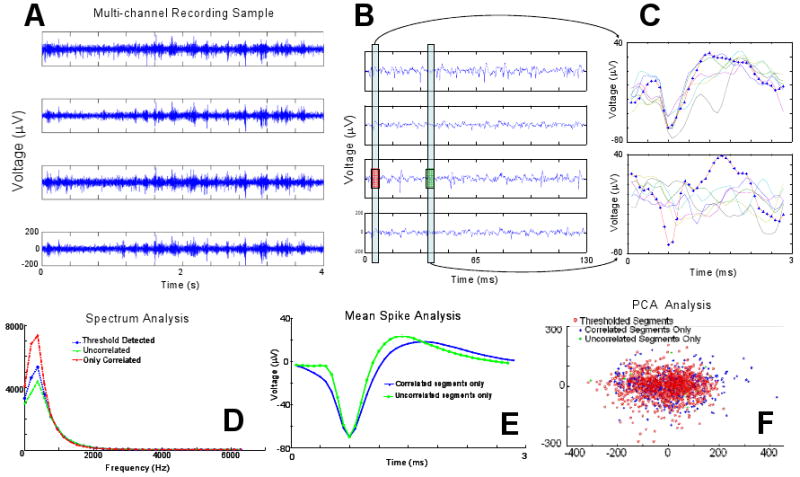Figure 1. Problem Description.

(A) Four-second raw recording segment from four microelectrodes spaced 250μm apart with evident common-noise. (B) Sample of same recordings on smaller time-scale (130ms) shows examples where threshold exceeding activity is recorded on all (red box; left) or only one electrode (green box; right). (C) Extracted signal-segments concurrently recorded at the same time points indicated in B (candidate spikes are identified in red with data point symbols visible). The appearance of correlated events (top) can closely resemble typical neural spike shape (bottom). (D) An FFT spectrum analysis of all threshold exceeding segments (threshold detected), segments with spikes only occurring on the electrode of interest (uncorrelated) and segments with events showing high correlation across the array, reveals that their frequency characteristics overlap. (E) Similarly a mean-spike generated from candidate spike-segments with high degree of inter-electrode correlation as compared with candidate spikes that appear only on the electrode of interest show similar features which could make template-based identification difficult. (F) The aforementioned spike segments also show over-lap in 2-D principal component space.
